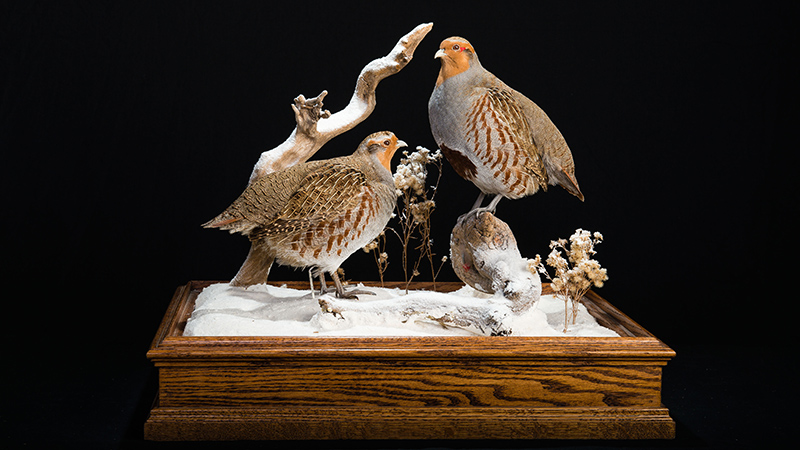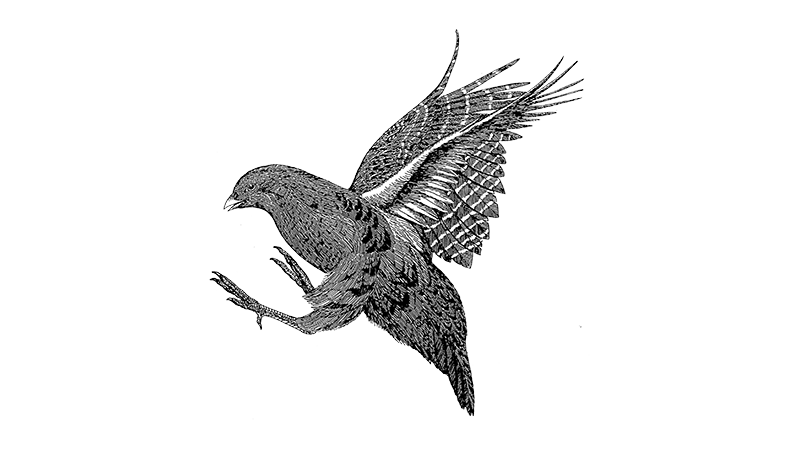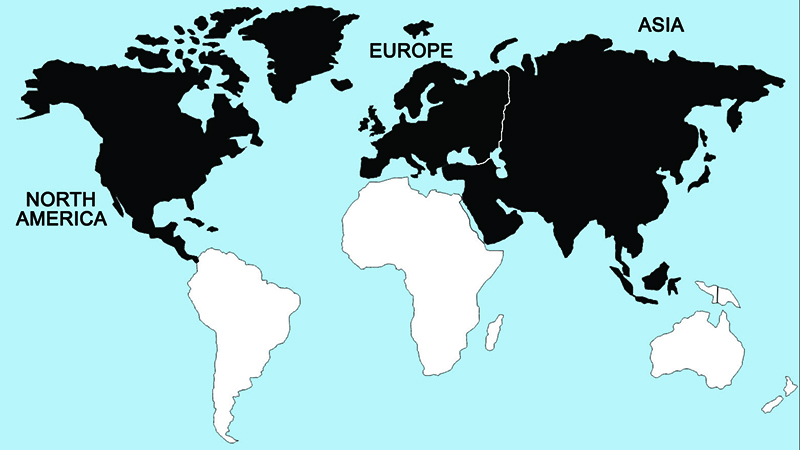Gray Partridge

Widespread in the cooler grasslands of North America as a result of introductions, the gray partridge is native to Eurasia. Like the native American quails, the social unit is a moderately large covey of 10–20 birds, rarely more than 30. Each autumn a covey apparently consists of a pair with their surviving young, plus additional reproductively unsuccessful adults. The covey remains intact through winter, and pair formation begins considerably before its spring breakup. The "rusty gate" call, which sounds like keee-uck, is the unmated male's advertisement call and is heard especially during early morning and evening hours. Pair formation seems to be a gradual process, and potential pairs often change mates before settling into a permanent pair bond.
The female builds the nest while the male stands guard. The nest is usually located in herbaceous cover, often in alfalfa fields, and is a shallow scrape lined with dead herbaceous vegetation. The eggs are laid at a rate of slightly less than one per day, so that about 20 days are needed to complete a typical initial clutch of 15–17 eggs. Incubation lasts for 24–25 days, and is performed entirely by the female. Males remain close by, however, and at the time of hatching may sit beside the female on the nest. Both parents attend the generally large broods; chick mortality is often high, especially when there is cold weather or rain during the hatching period. Although double-brooding is not known to occur, persistent re-nesting usually results in a relatively large proportion of immature birds in the fall flocks. On the average, about eight chicks per hatched brood survive until fall, giving a normal covey size of 10–12 birds for that time of year.

Regions Birds Are Found

Collection Location & Year
U.S. - South Dakota 1999
Taxonomy
| Order | Galliformes |
|---|---|
| Family | Phasianidae |
| Tribe | Perdicini |
| Species | Perdix |
| Genus | perdix |
Gender
Female & Male
References
- Johnsgard, P. A. 1973. Grouse and Quails of North America. Lincoln, NE: Univ. of Nebraska Press.
- Cramp, S., and K. E. L. Simmons, eds. 1980. The Birds of the Western Palearctic. Vol. 2. (Hawks to Bustards) London, UK: Oxford Univ. Press.
- del Hoyo, J. A. Elliot, and J. Sargatal, eds. 1994. Handbook of Birds of the World. Vol. 2 (New World Vultures to Guineafowl). Barcelona, Spain: Lynx Editions.